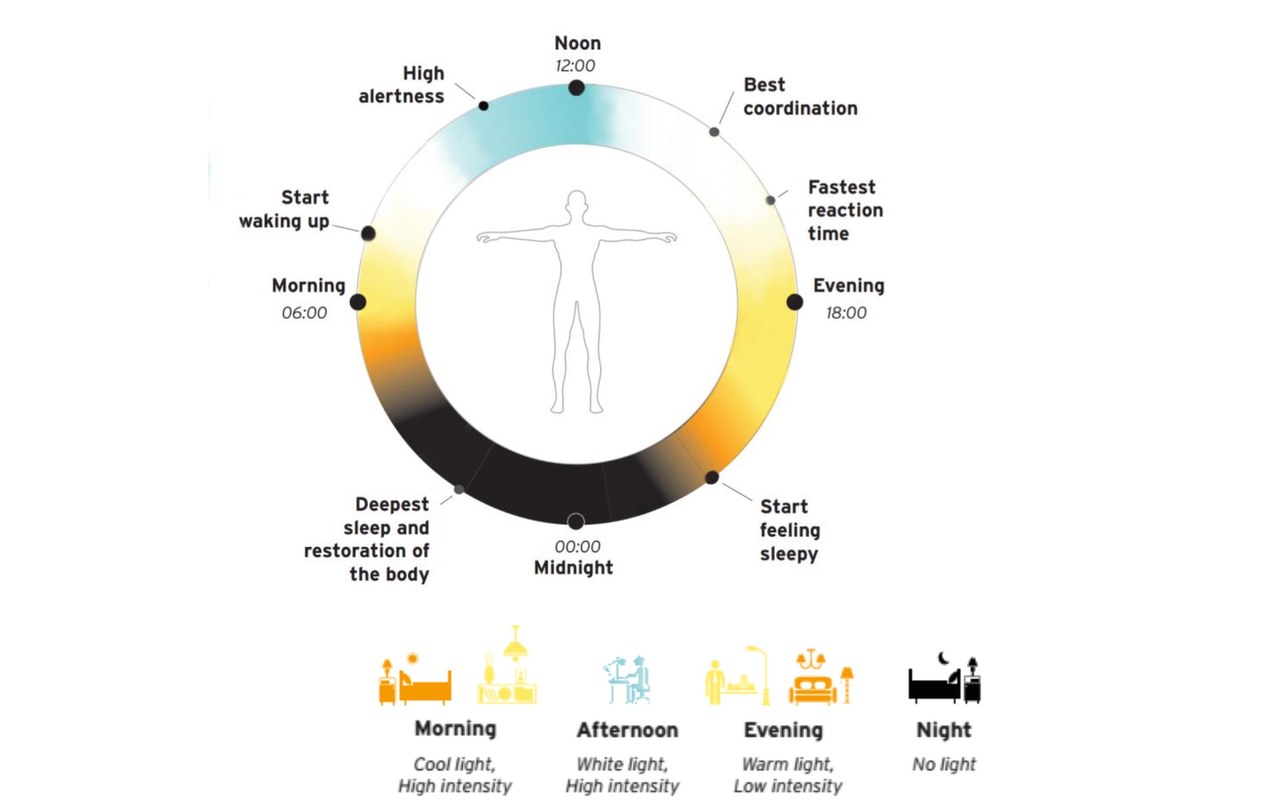Joint Position Paper by LightingEurope and the IALD on Human Centric Lighting
Light has been known for a long time to enable sight, safety and orientation. However, light is not limited to facilitate vision, it has the potential to achieve far more than this. Science has shown that light facilitates powerful non-visual effects on humans. Light has the ability to improve cognitive performance, it can energize, increase alertness or ease relaxation. It can improve mood, as well as stabilize the sleep-wake cycle of people. Therefore, it can be understood that light impacts people’s wellbeing and performance. In fact, the true value of light lies in the combination of excellent visual, biological and emotional effects of light. LightingEurope uses the terminology “Human Centric Lighting” for lighting that brings such benefits to the users. A product or system can only be “Human Centric” within the context of people, time and space, thus within a specific application. Therefore, Human Centric Lighting requires the integration of these effects in the lighting design.
Human Centric Lighting supports health, well-being and performance of humans by combining visual, biological and emotional benefits of light.
Benefits
Human Centric Lighting combines visual and non-visual effects of light to improve human health, well-being and performance. These are benefits for the users of light, such as patients, residents, and staff in hospitals and nursing homes, students and teachers in schools, employees in offices and manufacturing sites and residents in private homes can benefit from adequate lighting in their private environment.
The benefits differ per application area.
-
Visual benefits include: good visibility, visual comfort, safety, orientation
-
Biological benefits include: alertness, concentration, cognitive performance, stable sleep-wake cycle
-
Emotional benefits include: improved mood, energize, relaxation, impulse control
Enablers
There are several technical and content enablers that could support Human Centric Lighting. The presence of one or more enablers however, does not guarantee that a lighting system in an application space is truly “Human Centric”. The evidence that the actual lighting system in that application delivers the benefits remains the key requirement to claim Human Centric Lighting.
Technical enablers for Human Centric Lighting are especially:
-
intelligent lighting (including sensors and controls to support dynamics)
-
tunable white (at least tunable in light intensity and color)
-
personal control (allowing personal settings depending on age, gender, chronotype, preference and activity)
Content enablers for Human Centric Lighting are especially:
-
circadian light (following specific dynamics or a 24hr light-dark pattern of natural light)
-
activity support (lighting pre-sets supporting typical activities in that application)
-
natural light (directional and natural effects linking to the unconscious effects on people)
Daylight is the reference for good light quality and considered the basis for Human Centric Lighting. This includes at least the appropriate color quality and comfort (thus no temporal light artefacts and no discomfort glare) for the application as well as sufficient light at the right moment and in the right direction.
Application
Many people are spending more than 90% of their life indoor. Traditional artificial light lacks the ability to mirror the intensity, timing, color and dynamics of natural light. Human Centric Lighting can supplement natural daylight. Where Human Centric Lighting can deliver the aforementioned benefits, on the flipside, it is also conceivable that light can have similar negative effects when used incorrectly.
Application example: Cool light with high intensity will support people waking up in the morning and warm light with low intensity will support people to go to sleep. When using cool light with high intensity in the evening this will prevent people from going to sleep smoothly.
With the intention to achieve the desired beneficial effects and avoid negative effects, Human Centric Lighting solutions need to be based on an integrative lighting design. LightingEurope recommends to have this realized by a knowledgeable lighting designer. Human Centric Lighting is aimed at providing the right light for our activities at the right place at the right time.
Proper Use of the Terminology
LightingEurope acknowledges, that in many applications lighting designers have realized adequate Human Centric Lighting solutions, before this term was created and the understanding expressed in this position paper has been developed.
Now, as with many new things, the terminology Human Centric Lighting is sometimes used in an improper way. Descriptions such as “our lighting is made by humans”, “our light is used by humans” or “we produce already 10/25/100years light designed for people” are not the type of claims that are considered Human Centric Lighting.
Also, the pure technological feasibility to tune lighting in color or intensity is not automatically providing a Human Centric Lighting solution.
In order to promote an appropriate use of the term Human Central Lighting, LightingEurope recommends that the promised benefits thereof are backed by scientific user-based evidence relevant for that specific proposition in that specific application which will typically require a dedicated design process.
About LightingEurope
LightingEurope is an industry association of 33 European lighting manufacturers, national associations, and companies producing materials. LightingEurope members represent over 1,000 European companies, a majority of which are SMEs; a total workforce of over 100,000 people in Europe; and an annual turnover estimated to exceed 20 billion euros. LightingEurope is dedicated to promoting efficient lighting practices for the benefit of the global environment, human comfort, and the health and safety of consumers.
About IALD
Founded in 1969, the International Association of Lighting Designers (IALD) is an internationally recognised organisation dedicated solely to the concerns of independent architectural lighting designers. The IALD strives to set the global standard for lighting design excellence by promoting lighting quality, the advancement and recognition of architectural lighting designers and the architectural lighting design profession. IALD members are located in 54 countries and practice globally. The IALD has a European office based in Brussels. More information about IALD is available at www.iald.org

